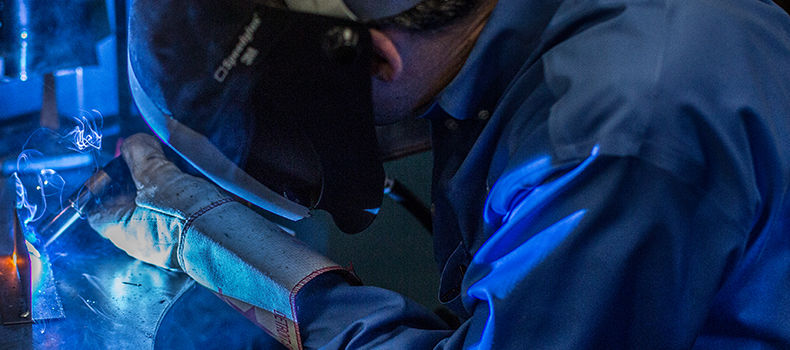 When you're in manufacturing, every extra expense adds to your overhead and cuts into your productivity. How do you lower your labor, material and equipment costs? At OTC Daihen, we know welding. Here's our look at how to reduce welding costs on your production line.
When you're in manufacturing, every extra expense adds to your overhead and cuts into your productivity. How do you lower your labor, material and equipment costs? At OTC Daihen, we know welding. Here's our look at how to reduce welding costs on your production line.
How to cut welding manufacturing costs with better weld quality
Reduce spatter. Spatter is the bane of welding operations, throwing molten metal out of the weld and onto the work piece and surrounding area. It's caused by poor wire quality, metal that hasn't been cleaned properly, the gun at the wrong angle, a poor gas mixture, drafts moving the shielding gas away, humid conditions and an incorrect wire stick-out length. Adjusting these parameters can quickly improve the quality of the weld.
Reduce cleanup. Cleanup involves removing excess spatter through grinding or buffing. In addition to taking steps to reduce spatter, you can reduce cleanup time by getting the right metal for the job from a quality supplier and ensuring your welding robot settings are properly set for that particular material. It also cuts your labor costs and allows your production line to run more quickly.
Switch to an inverter. Using an inverter in your assembly line helps provide more uniform power and welding results. This means you'll have improved weld quality, requiring fewer pieces to be reworked. It also tends to save power, with some utility companies even offering a rebate to help cover part of the cost of adding inverters to your production line. This aspect helps lower energy, labor and material costs.
Reduce rework. When a weld is of poor quality, many production pieces are sent back through the line to be reworked. This costs both labor and materials as the work is done over again. It can create production bottlenecks in both quality assurance, when testing slows down the process, and in the welding line as production pieces are sent back through to be reworked.
Use better quality material and tools. By starting with the right settings, right material and right tools to get the job done, you can drastically improve the weld quality, lower the overhead and raise the production line's efficiency. This allows you to spend time focusing on additional areas for improvement, turning your production facility into an agile enterprise that is ready to respond to market changes.
By ensuring better weld quality, you can realize significantly lower welding costs on your assembly line. If you need help finding the right welding solution to your production lines woes, please feel free to contact the experts at OTC Daihen today. We've been helping manufacturers achieve the best results with innovative welding technology for nearly 100 years and we look forward to helping make your production line operate for less.



